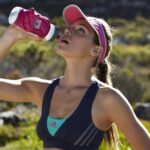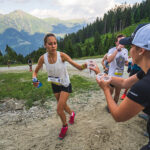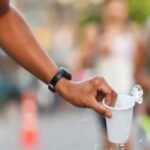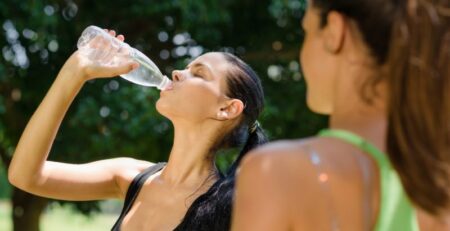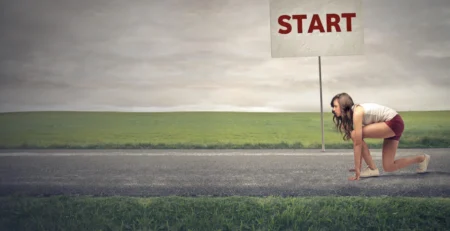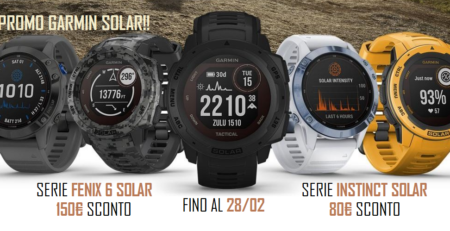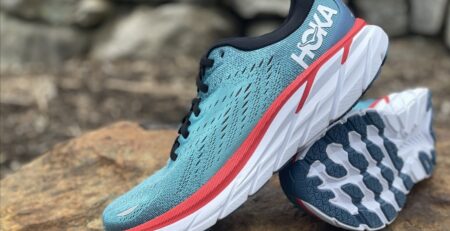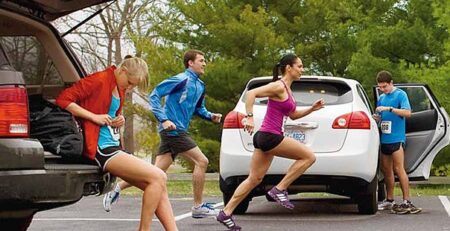Hydration and sport, an absolutely essential combination.
Knowing how much you need to drink before, during and after training is FUNDAMENTAL for maintaining the right level of hydration in the body, an indispensable factor for the proper functioning of our organism, our health and our sports performance.
The adult body contains up to 50-60% water, and all bodily functions depend on our state of hydration. Water is crucial for regulating body temperature, for digestion, for transporting nutrients and waste substances. Maintaining a good state of hydration is therefore basic for the health of our cells, tissues, organs, apparatuses and all vital functions.

WHAT HAPPENS WHEN YOU TRAIN?
During sports performance, our organism is stressed, stressed and pushed beyond the threshold of ‘normal’. It is precisely for this reason that we must think about hydrating it correctly to enable it to express its athletic potential to the full.
During training, and even more so during a sports performance, the body temperature rises rapidly due to the intense activation of the muscles. The body reacts to the rise in temperature by sweating: when sweat evaporates, it removes energy (in the form of heat) from the body, allowing the temperature to drop. This physiological process is the result of a mechanism called thermoregulation, which should not be hindered in any way but helped by constant rehydration at regular intervals.
Sweat is a hydrosaline solution produced by the sweat glands and consists mainly of water, sodium and potassium.
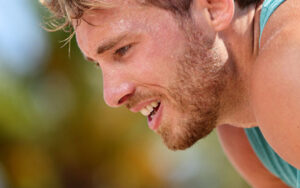
HOW MUCH SHOULD YOU DRINK?
It may sound like a platitude but the answer is‘neither too little nor too much‘. Drinking too little encourages dehydration and drinking too much is no good anyway!
In anticipation of a competition or just intense training, it would be a good idea to think from the morning onwards about proper hydration, sipping water frequently (without overdoing it), and remembering to hydrate well even in the hour before the start of our activity.
During activity, do not wait until you feel thirsty to decide to drink! For the uninitiated, feeling thirsty is already a sign of dehydration. So the best thing you can do is to prevent it by drinking regularly in small sips during training.
Once the activity is over, think about replenishing lost fluids by sipping water in small sips more frequently, always without overdoing it!
WHAT HAPPENS IF WE DRINK A LOT?
Drinking too much can be risky: overhydration can lead to exercise-associatedhyponatriemia , which means having too much water and too little sodium in the blood. This can lead to nausea, headaches, confusion, muscle weakness and cramps.
In addition to the fact that we will probably have to interrupt our training or competition several times to empty our bladder!

WHAT HAPPENS IF WE DRINK TOO LITTLE?
Hypohydration can impair the quality of training and competition, significantly reducing physical efficiency, endurance and encouraging the onset of muscle cramps and spasms. Definitely in the decalogue of things not to do and not desirable!
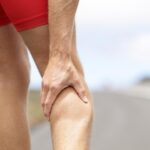
IN CONCLUSION
If we decide to engage in physical activity, we must remember to drink adequately to maintain the right level of hydration and to enable us to tackle our exercise without problems. Clearly, there is no such thing as the right ‘amount’ of water for each of us to consume, because several factors must be taken into account. These include, for example, the type of physical exertion one chooses to do and the conditions in which one will do it. Keep in mind, however, that, as in all things, one should not overdo it. So let’s simply choose to drink in moderation, with common sense and frequency!
Precisely so that we don’t forget to drink during our sporting activity, on our site you will find various types of water bottles, which are practical and designed to be carried with you while running.
Have a look here!



